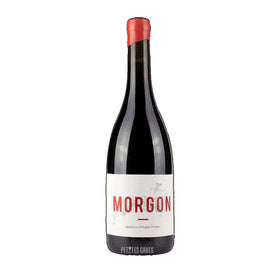Winegrowers Jean-Paul and Charly THÉVENET
Winegrowers: Jean-Paul and Charly Thévenet
Region: Beaujolais
Town: Villié Morgon
Grape varieties Type of wine: Gamay
Surface area Winery: 7 ha


The wines of the Winery

These wines should also please you

We're talking to you about his Winery
|
Among the Thévenets, I ask for the father, Jean-Paul, and the son, Charly. Jean-Paul Thévenet: a true figure of natural wine! For more than 30 years he has been working the Beaujolais vineyards according to the precepts of biodynamics. As early as 1985, he was one of the only ones, along with Marcel Lapierre, to propose healthy wines. Since then, more and more winegrowers of this kind, influenced by Jean-Paul Thévenet, are appearing in Beaujolais, and that's good. At the time, these wines were often rejected for the appellation on the pretext that they were not representative of the Morgon appellation. Incredible! The Winery is located in Villié-Morgon, near the hamlet of Le Clachet, on the edge of the vineyards of Winery Lapierre... there is no chance. The Thévenet's Morgons? It's hard not to like them! Gourmet, nuanced, crisp and fresh wines, with deep notes of black fruits, touches of spices and an excellent ageing potential. In short, we love them. Let it be said, the Thévenet family in the Beaujolais still has many good years ahead of it! |
Charly Thévenet: a busy career! Trips to the Loire, Italy and to his father Jean-Paul's house, of course, to learn about the life of the vine and the wine. Then came the time to make wine under his own name; the 'Régnié' terroir offered advantages for the installation. Firstly, the proximity to the heart of the family tradition. Secondly, because this little-known appellation offers plots of land that are easier to acquire than in the other appellations in the area. In 2007, he settled here for good with 7.5 ares of vines and talent to spare. The Gamay grape expresses itself wonderfully here on granitic soils facing south and south-west. Of course, as dogs don't make cats, the vines are managed according to the codes of biodynamic culture, without any input. The vinification is carried out using natural yeasts and without adding sulphur. Fermentation follows the classic rule for the region, i.e. carbonic maceration (a fortnight or more depending on the year), again without any external yeast. |











